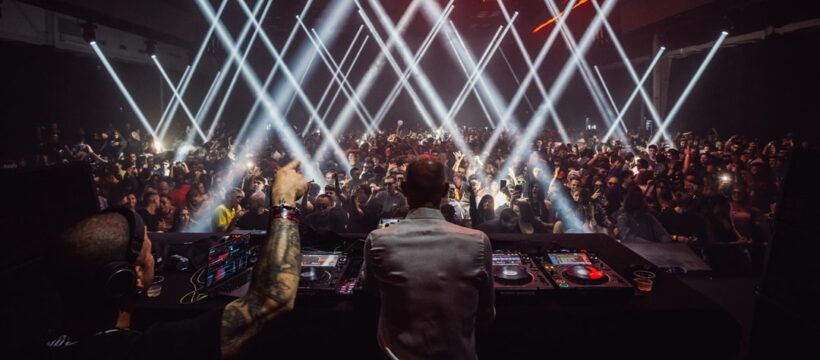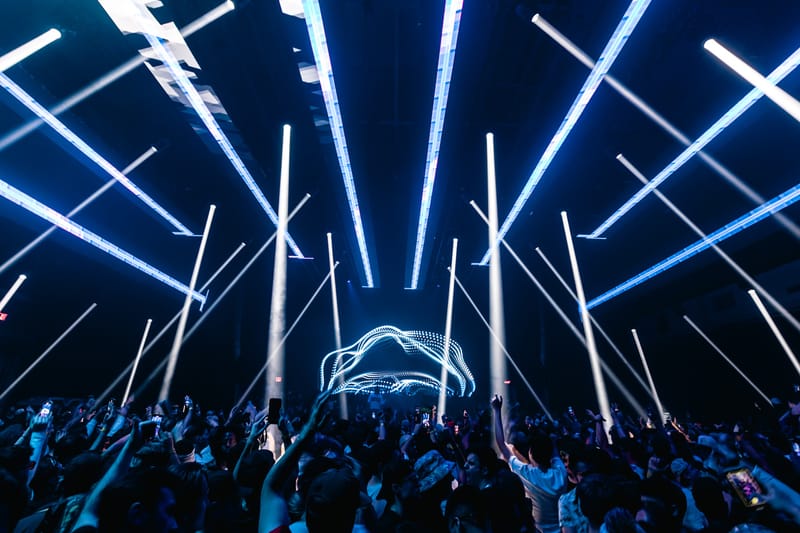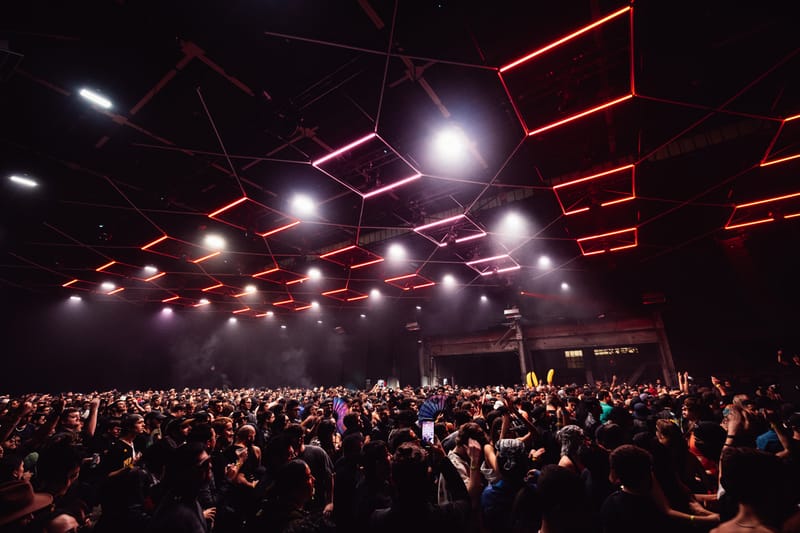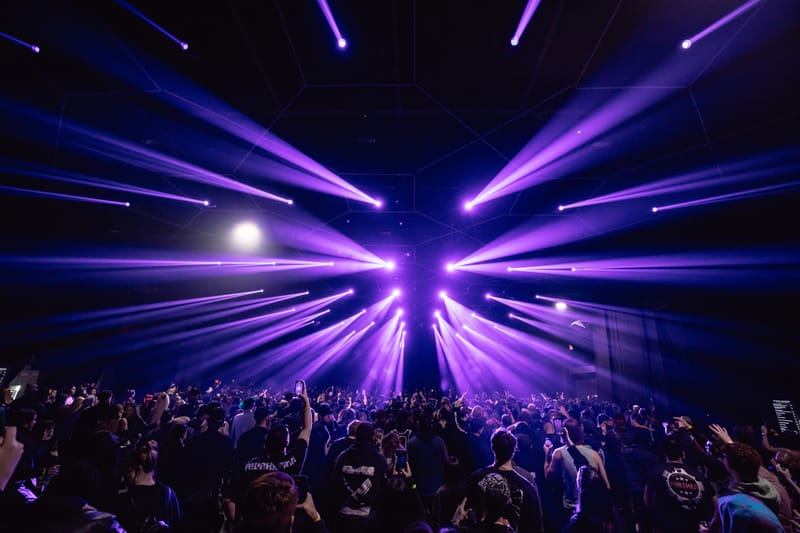From Detroit to Budapest, each major city has its own distinct style of techno but no country embraces the genre quite like Germany. It’s an affinity rooted in history, particularly around the fall of the Berlin Wall in 1989, when West Germans were once again emboldened to host parties after years of governmental suppression. Borrowing notes from the ongoing techno boom in Detroit, Germans wrote the rulebook for hosting a rave – a barren warehouse, an energized audience and, of course, crowd-pleasing DJs.
As a genre that generally falls under the umbrella of electronic music, the definition of techno – and what constitutes a rave – has become somewhat murky over the years. Time Warp, a traveling music festival, is out to set the record straight by inviting international audiences to experience a “true” German techno rave firsthand. In 1994, Time Warp held its first rave at “Walzmühle,” once one of the largest mills in Europe, located in the German city of Mannheim. Over the past three decades, Time Warp has been held in major cities throughout the globe and along the way, platformed now-renowned acts such as Richie Hawtin, Laurent Garnier and Sven Vath.
Over the weekend, Time Warp headed to New York City for two nights of non-stop raving in Brooklyn, produced in partnership with Teksupport. In a new interview, Time Warp US founder Robin Ebinger and Teksupport founder Rob Toma spoke about what defines a truly “German rave,” organizing the NYC event and techno’s evolution over the years.
Michael Poselski
Time Warp describes itself as an “authentic German rave experience.” In terms of the actual experience of attending, what does this mean? What can a raver expect from a night out with Time Warp?
Ebinger: People and the media often proclaim that the original Time Warp festival stands as the world’s most iconic techno festival — a true rave that preserves the authentic cultural spirit. From my perspective, what distinguishes Time Warp is our intrinsic connection to the dance floor and close ties to the scene and artists.
We approach each show with nervous excitement, ensuring that our love for the music and dedication shine through. We also put a lot of focus on detail for the dance floors. This means we try to incense the entire room and not just put light and video on the stages. It’s about a symbiosis of light, video and sound. Attending Time Warp isn’t just about enjoying great music – it’s about being part of a cultural phenomenon.
As an event that has German roots but travels globally, how do you cater the experience to a given city and its own techno culture?
Ebinger: Crafting the Time Warp experience for diverse cities and their distinctive techno cultures necessitates a considerate and flexible approach. Equally important is the selection of local partners. Here in New York City, for example, the Teksupport team has become good friends.
Michael Poselski
The latest festival took place at Brooklyn Navy Yard, a sort of industrial warehouse. Aesthetically, what were attempting to create with this Time Warp experience? Can you walk me through the decision-making process behind choosing a location and curating the artist roster?
Toma: In Mannheim and some of the other Time Warp iterations, they often have as many as five stages but it’s much harder to find large-capacity venues to do this in the US. Teksupport has always been active at the Brooklyn Navy Yard, but specifically held Time Warp there because we were able to build a tunnel and activate two adjacent buildings to create a two-floor experience.
This year, we struck a balance between straight techno in one room and more house and techno in the other. We didn’t want to just have straight techno across both rooms, but also diversify the programming to appease the tech-house sound and include more house and techno favorites.
Ebinger: The choice of venue adds another layer of complexity. It has to be a space where our production vision can come to life.
Selecting the lineup, meanwhile, is a collaboration of showcasing Time Warp’s signature talent and the preferences of the local market. The process requires us to understand which international artists resonate with the audience while providing a platform for both emerging and established local talent.
You’ve spoken in the past about wanting to make Time Warp events feel “intimate.” Given that an event can draw up to as many as 20,000 people, how does one go about cultivating that feeling?
Toma: A lot of big festivals and events focus mainly on stage designs, whereas our production spans the whole range of the venue. We create 360-degree experiences that aren’t focused on only one stage. We also designed a sound system that emits music at a lower level across a wider range of speakers, which evenly disperses the sound levels.
Michael Poselski
How has the event evolved over the past three decades since its origin in 1994? What changes have you witnessed in techno, as a whole, over the years?
Ebinger: Although Time Warp has grown huge, we are still accepted and regard ourselves as an underground dance event. Time Warp is big but, nevertheless, it’s an intimate clubbing atmosphere. On a broader perspective, with social media and online platforms, we’ve fostered a strong community of techno enthusiasts connected by their passion for the music and the event.
In the realm of techno music, there’s a cyclical nature. New music is incorporating elements from earlier periods but techno is also gaining mainstream recognition. Its influence has transcended its genre.
Do you have any particularly standout moments from Time Warp since you’ve taken the reins?
Ebinger: Personally, I’m always thrilled to greet familiar faces—friends and industry colleagues alike. And, of course, there’s the experience of witnessing our dancefloor designs come to life. Many of them are prototypes, so the true test occurs when the dancefloor is actually filled. It’s a moment of truth for the entire event.
Source: Read Full Article



